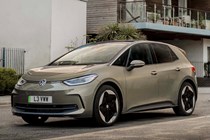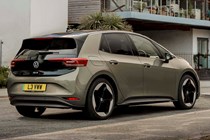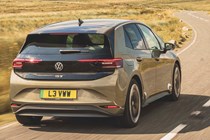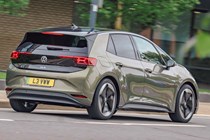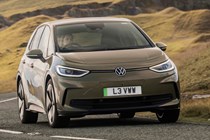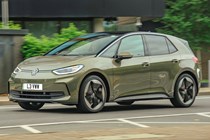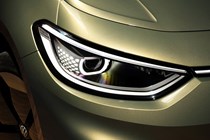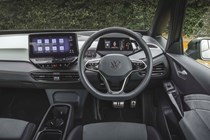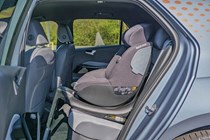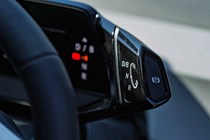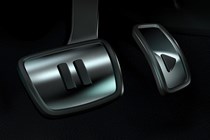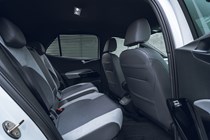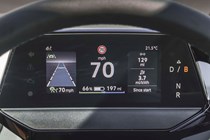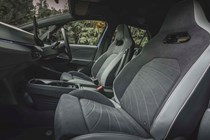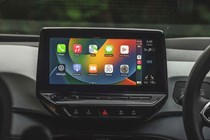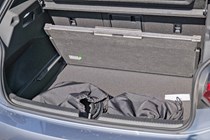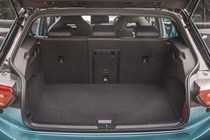
Volkswagen ID.3 long-term test
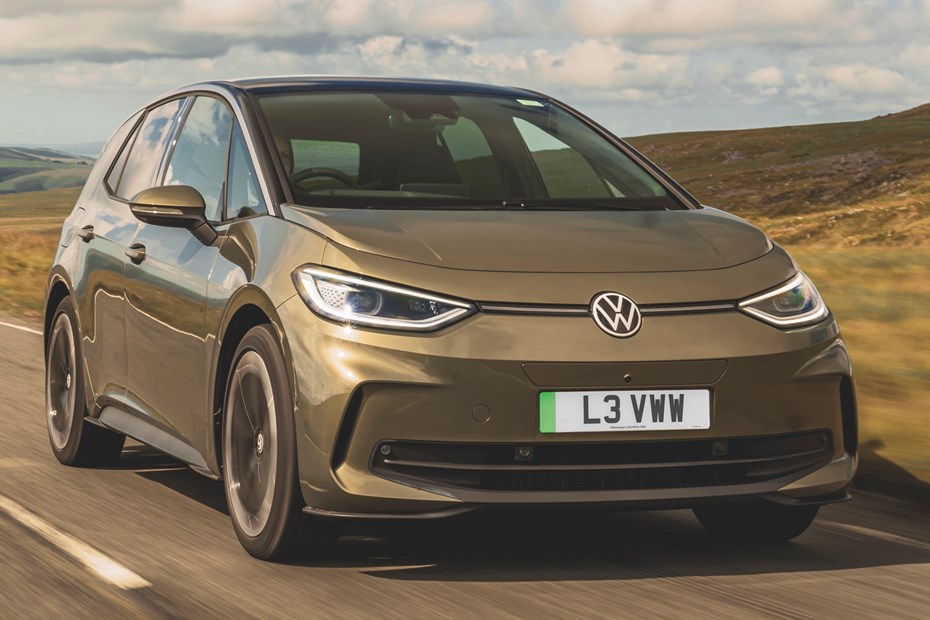
Murray Scullion on living with VW’s hugely important ID.3. This review is broken down into chapters – use the links below to navigate between them if you don’t fancy reading the whole article.
Update 1: Welcome
Update 2: Performance and handling
Update 3: Comfort and interior
Update 4: Practicality
Update 5: Head-to-head
Update 6: Would I recommend one?
Update 1: Welcome
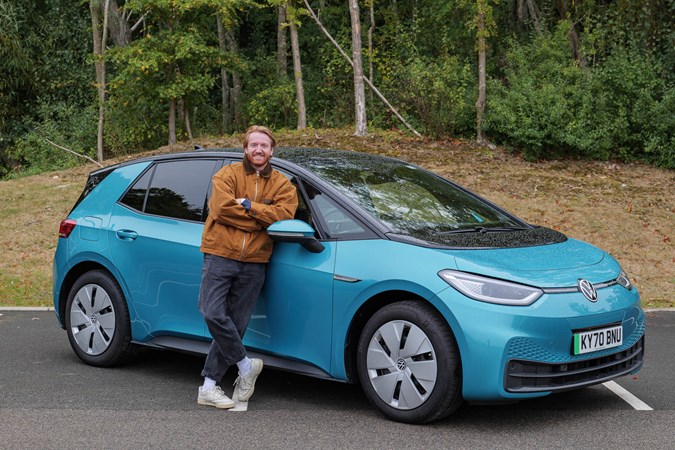
According to VW, the ID.3 will become the third landmark in the company’s history, behind the Beetle and the Golf.
It’s VW’s first attempt at a purpose-built electric car, and reassuringly, the company has come up with a fresh-sheet design. It feels like it too. It’s…very futuristic, both inside and out. Will this begin to grate? Only time will tell.
The way I see it, there are two big questions to answer during my six months with the car. The first; is it the best electric hatchback on sale? The second? Would I choose one over a Golf? Two big questions with big answers.
VW is all-in with the ID.3 and it needs to be best in class in order to be a success in my eyes.
Electric car sales are ramping up, and there are thousands of customers out there on the verge of making the switch. If you want a reliable VW hatchback, do you go with the Golf or ID.3?
What about the spec?
We’ve gone with the Max Pro Performance 58kWh. In English, that’s second from top spec, with the 58kWh battery. There’s loads of interesting tech included, which we’ll go into detail later. Highlights include:
> Augmented reality head-up display
> ID.Light
> ‘Natural’ voice control
> Fast charging
The WLTP-backed range is 260 miles (it’ll be interesting to see how close to that I can get), the motor makes 204hp, and it’ll cover the 0-62mph dart in 7.3 seconds.
Official charging time from a 7.2kW charger (think street parking or one you’d have installed at home) is 9hr 30 minutes all-in. On the 100kW rapid chargers (the ones found at service stations) it’ll gain 180 miles in 30 minutes.
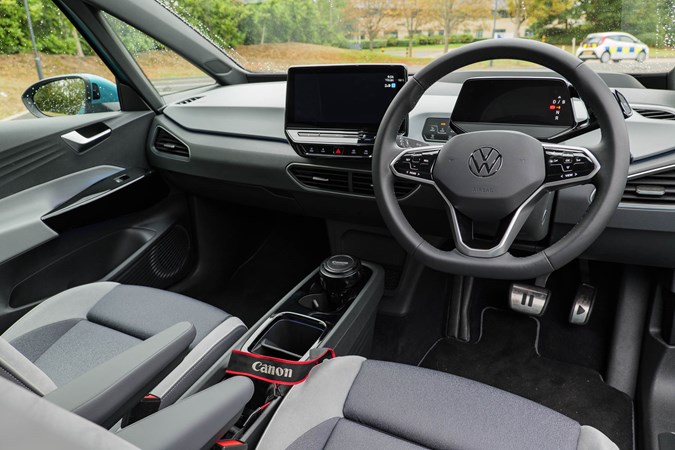
Any extras?
I’ve kept extras pretty slim. First up is the heat pump. It takes care of warming up the car, meaning less energy is needed from the battery. It cost £1,000 and VW promises it improves range.
The only other extra is the excellent Makena Turquoise paint. That was £645 and not everyone agrees with how brilliant it is.
How’s it going so far?
So far, so good. A month in and it still feels very, very futuristic. Sitting down and not having to switch a button (or turn a key! Remember that!?) takes some getting used to. As does the gear selector.
It’s a rotary dial you twist (pic below), located behind the steering wheel. I love it. It frees up so much space around the centre console. But it seems like the way you pull/push to get drive/reverse is the opposite way round than would be natural to me. Nevertheless, I think I’ll get used to it.
I absolutely adore the seats too. They’re not leather (overrated) and you simply melt into them. Adjustable armrests for both front passengers are a touch too.
Problems? Only one minor one. The first time I got in it I couldn’t release the blind on the panoramic sunroof. It’s touch activated (like pretty much everything else in the car) and computer was just saying no. However, the next time I got in, it worked fine. And has ever since.
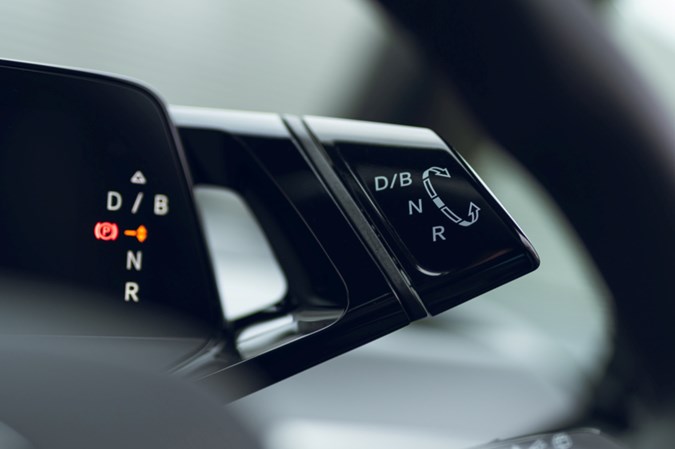
Update 2: Performance and handling
It’s about time we talked about performance. With internal combustion engine cars (petrol and diesel to you and me) the pertinent performance figures are usually 0-62mph times and top speeds.
But with electric cars, range is by far and away the most important indicator. According to the WLTP figures, my ID.3 should do 260 miles. My lifestyle is maybe slightly different from many electric car drivers. I live in London and the majority of my driving is on the motorway as I use public transport to get around the city (love a bev).
Range is around 200 miles. That’s in Eco mode (more on that later) with the regen braking on. This is around 23% down on WLTP. But it’s the same for most other electric cars (minus perhaps Tesla).
Batteries don’t perform as well in the cold. So in December, the range dropped to 190 miles. This isn’t a huge issue because of how well the range indicator performs. If it says 150 miles worth of battery, you’ll be able to do 150-ish.
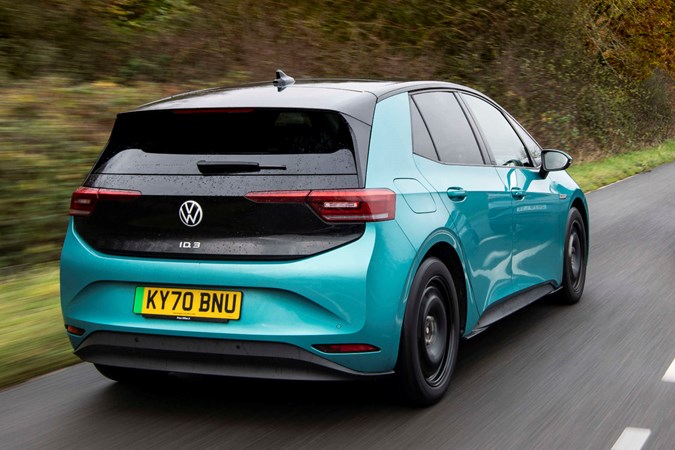
Now, to get back to the traditional performance testing I mentioned earlier. The 0-62mph time is 7.3seconds and I can attest to this.
There’s also 229lb ft of torque on offer. This figure is largely meaningless to most people. But I can say that you benefit from those strange combo of letters and numbers off the line and on the move.
The 0-30mph sprint in the ID.3 is pretty strong for a sensible family hatch, while the 20-50mph sprint is also peppy. This offers great overtaking flexibility and it’s really handy for nipping in and out of lanes.
Drive modes
There are three different drive modes to choose from. In essence, this allows the car to alter suspension stiffness, urgency of power and weight of steering.
There are three modes. Eco, Comfort, and Sport. The differences are subtle.
Eco dials everything back, sets the climate control to be less wasteful and dulls throttle response. This is all in the aid of maximising your range and minimising your consumption.
Comfort is the middle ground in all of this, with suspension set to its most pliant mode. Sport dials up the throttle response and stiffens everything.
You’d be hard pushed to notice too much of a difference between the modes. Your right foot needs to exert less effort to achieve full acceleration in Sport. And in Eco you do use less electricity.
I keep it in Eco mode most of the time in order to maximise the all-important range. I suspect most ID.3 drivers do the same.
What about the handling?
I’ve recently driven the new Cupra Born. It’s mechanically similar to the ID.3 except that it’s supposed to have a bit more of a sporting twist. It gets harder, sportier suspension and bigger wheels.
What I found amazing is how little difference there was between it and my car.
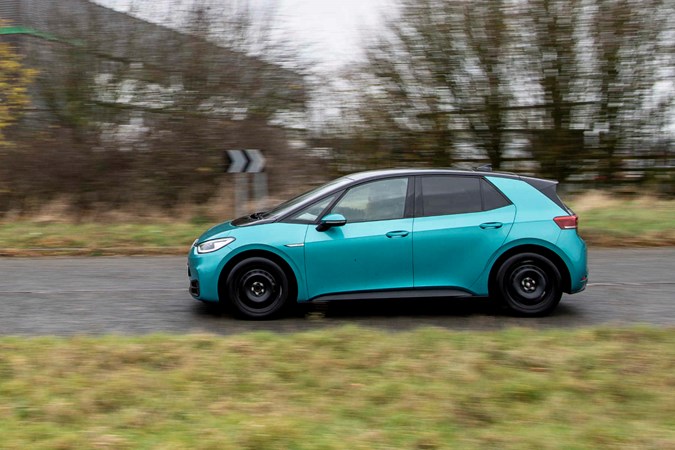
I’d even go as far as saying the VW is pretty good fun for a family hatch. The acceleration is strong from the battery and the steering is goldilocks – in that it’s not too heavy or too light. On a B-road it flows nicely and it can get a shift on.
While on city streets it’s direct enough that manoeuvring between parked cars is easy. Good turning circle too, perfect for negotiating tricky mini roundabouts and driving around abandoned Ubers.
Update 3: Comfort and interior
I’ve been living with the ID.3 for three months now. And the interior (well along with the turquoise paint) is still the talking point for most passengers.
A fair few people have been in the front and rear now and none of them can quite get over how sparse it is for a £40k car. I think people have come to expect leather and buttons as premium, something the ID.3 is bereft of.
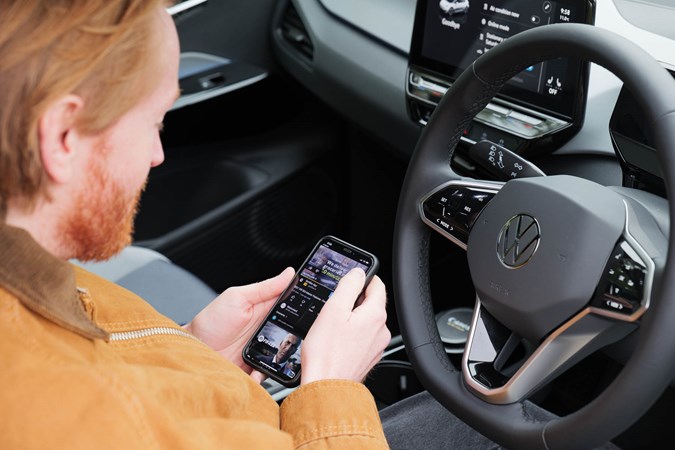
VW might have shot itself in the foot here. As a very boring car enthusiast, I appreciate the pared back aesthetic, huge amount of space in the front, and clever touches like the wireless phone charging compartment. I don’t like leather seats, so that’s another tick for the car.
For regular folk it all seems a little too less-than-premium. One passenger noted that it was ‘very grey in here’ before audibly sighing. Regular folk notice little things too. More than one person has commented on the lack of alloy wheels.
Another quick note about this car. VW has done some phenomenal cost savings. If you really look for them, you’ll find some cheap-feeling plastics. Like the door cards, for instance.
But the most annoying piece of penny pinching is the rear window controls. From the driver’s seat, rather than having four switches for four doors, you get two switches and a button to switch from front windows to rear. Whenever I need to lower a rear window, I always forget this.
What’s it like for passengers?
I’ve had zero complaints from passengers about space or comfort. In the front, thanks to no gearbox et al, there’s loads of space for passenger’s stuff.
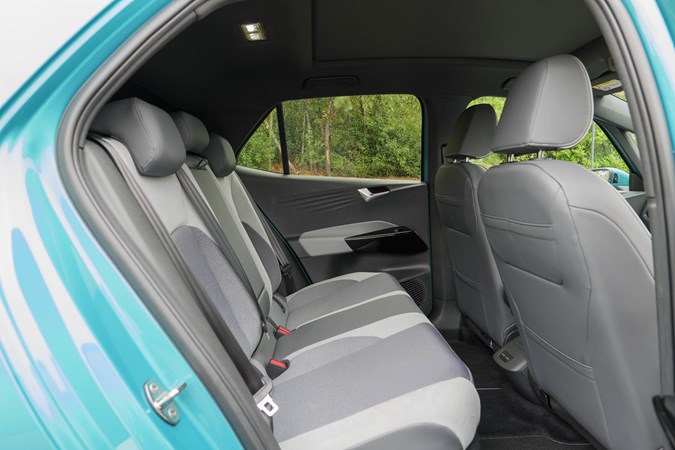
In the rear, the floor is completely flat (once again, thanks to its electric layout). This ultimately means should you have three passengers back there, the person unlucky enough to be in the middle seat at least doesn’t have to awkwardly put their feet atop of a transmission.
The twin USB-C slots for charging phones in the rear is a nice touch. So far, none of my passengers have had a phone that uses a USB-C cable though.
Infotainment
Your understanding of the VW ID.3’s infotainment system is paramount to you enjoying it. Let’s start with its foibles. Occasionally it will take a while to ‘wake up’ as it were.
This means on a cold day, when you’d like to put the heating on, it might come up with a message that says: ‘Sorry this function is currently unavailable. Please wait.’ This is utterly infuriating even if it is only for a short amount of time.
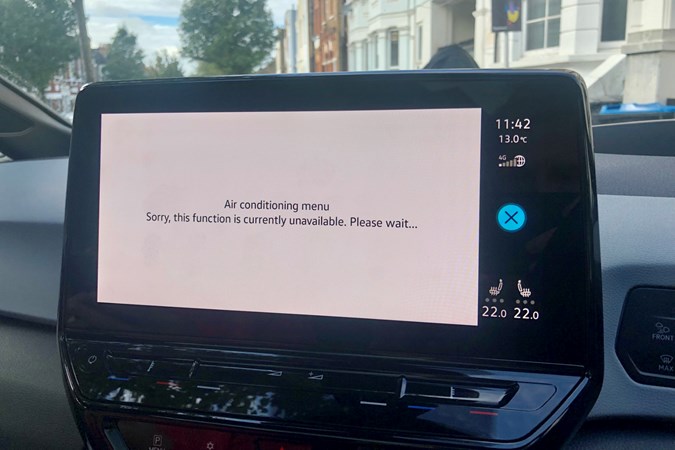
Apple CarPlay is a massive thing for me. I don’t know if there’s been an innovation in the last 15-20 years that’s more important to the car buying public. The wireless system in this ID.3 is much like any other VW. For me personally, that means it works perfectly 90% of the time. About 5% of the time it simply does not work at all for the entirety of the journey, and the other 5% of time it’s horrendously slow.
The nav is dead fancy. It’s an augmented reality jobby. This means it relays instructions, such as which junction to take, on the windscreen via arrows. The arrows guide you specifically to the road you need to take, rather than simply a vague ‘go right here’ thing.
I think it’s genius. If you really like your tech I’d recommend it. If you think that sounds like a gimmick, I’d avoid it.
VW’s WeConnect ID app displays how much charge the car has, what speed it’s charging, allows you to search for charging stations, and to set the temperature. It’s refreshingly simple to use. Can be buggy though, and sometimes doesn’t allow me to turn the heating on remotely.
Update 4: Practicality
Practicality is a hugely important area when testing a car. After all, cars are mostly a means of transporting things and people to other things and people.
The ID.3 is a traditional hatchback shape. But it’s, of course, electric. Theoretically it should be more practical as it has lots of little batteries that are easier to package, rather than a huge engine up front like in a petrol or diesel powered car. Right?
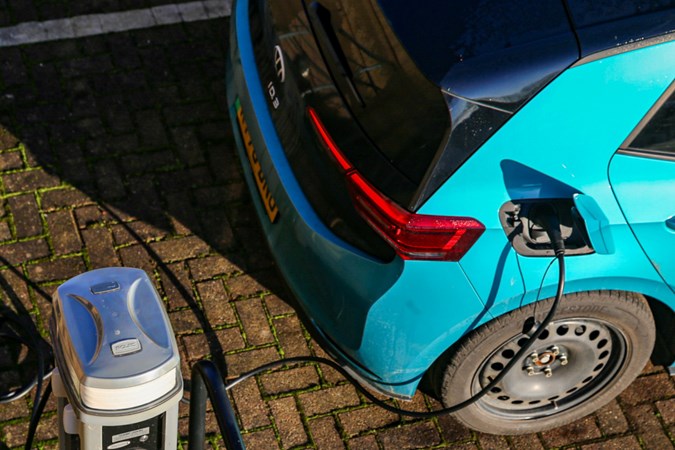
What’s the bootspace like?
We’ll kick things off with a gripe. A petrol/diesel car has an engine in the front. Whereas the ID.3’s batteries are in the middle of the car, underneath the passengers. This means there should be a little front boot (or frunk as the Americans call it) like with the Ford Mustang Mach-e. Wrong.
This means you have just one boot, like a petrol/diesel car. It’s 385 litres in capacity. A Golf’s is 380 litres. You see what we’re getting at here? It’s not really any worse or any better.
The boot itself is flat, wide but a bit shallow. At least the underfloor storage is good for keeping the charging cables in.
And the space in general?
Once upon a time a medium-size hatchback was large enough transport for a small-ish family. Now, with huge prams, bags and child seats, this isn’t the case.
The truth is if you have a couple of kids an ID.3 probably isn’t practical enough for you. But dare we say it, it’s the same case for most cars this size.

Nevertheless, the ID.3 is certainly practical enough if you’re not blessed with the drip of multiple runny noses. Up front, because the gear selector is up next to the steering wheel, there’s loads of room. Two one litre bottles and two phones will easily fit into the central storage area.
In the rear there’s a flat floor. So the middle seat passenger doesn’t need to go legs akimbo. Two USB-C slots back there too.
Parking
It’s a doddle to park. The image from the rear camera is clear and sharp, plus it’s hidden in the VW badge. This means while it’s not in use it’s not exposed to the world, making it less likely to get caked in mud.
The view out the rear view isn’t brilliant because of the narrow windows, but it’s something you get used to.
One negative on the parking side comes courtesy of its big brain. It will slam on the brakes if it thinks it will hit something. A good safety feature, obviously. However it’s far too keen to kick in when parallel parking on a tight street. Especially as it knocks it into neutral. So it’ll abruptly stop, then you need to select Drive again. Annoying.
Update 5: Head-to-head with the VW Golf
On test: VW Golf Style eHybrid
TL;DR The Golf is a good halfway house (but not the best) if you can’t make electric work. But I’d choose the ID.3.
At the start of this long-term test I said that a true sign of the ID.3’s success would be making it better than a Golf. And I think VW has succeeded.
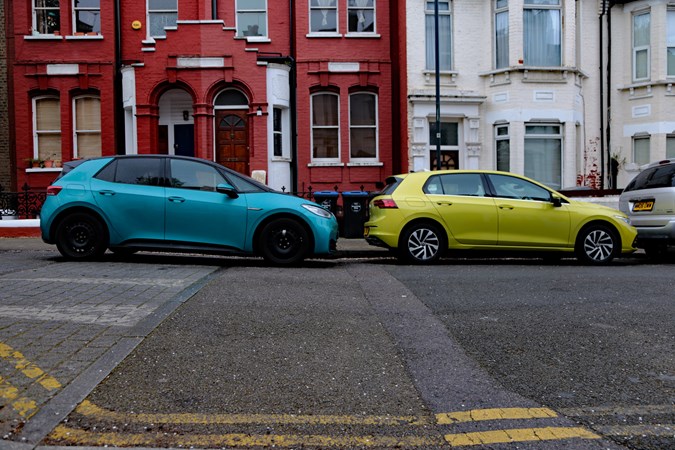
Styling
Let’s start with the most subjective subject first. The Golf is safe and understated, while the ID.3 is much funkier and youthful.
The ID.3 doesn’t have an engine, so doesn’t need a long bonnet. This means it can have a different shape to a conventionally powered car. Shorter bonnet = shorter, squarer, rounder design. This does make it look a bit blobby, but different nevertheless.
The Golf’s longer bonnet leads to a slightly more elegant shape. It looks a bit less podgy. But at the same time, it isn’t all that different to the previous-generation Golf. Or the one before that…
Interior
The interiors are fairly similar; you’ll notice more than a few shared parts. The ID.3’s is more pared back, has more room (thanks to the gear selector being near the steering wheel) and also feels a bit cheaper.
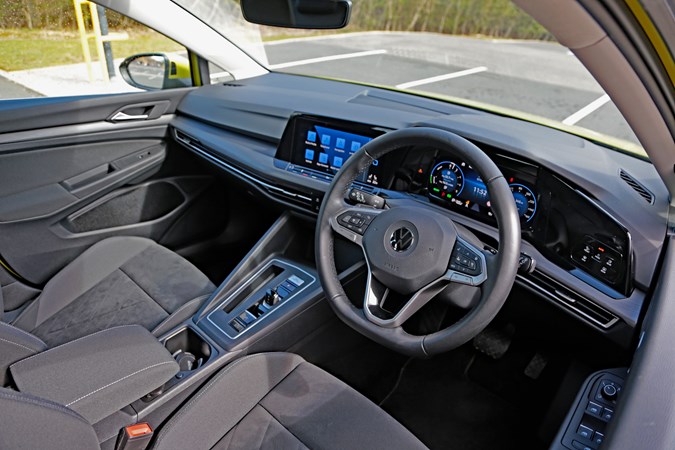
Some of the plastics (most notably the door cards) feel scratchier. But the ID.3 has more tech. The infotainment is as annoying in the Golf (buttons that aren’t really buttons, screens that take forever to boot, Apple CarPlay randomly cutting out) as it is in the ID.3.
Practicality
The ID.3 has a larger boot than a regular Golf. And a considerably bigger one than this eHybrid PHEV we have on test here.
Rear seat passengers won’t be able to tell much of a difference other than the Golf has a tunnel running down the centre of the car and the ID.3 doesn’t.
Driving
This is where the cars differ the most. The eHybrid is a plug-in hybrid and the most electrified Golf on offer. It utilises a 1.4-litre petrol engine and an electric motor that make 204hp, giving it an official 42-mile electric range and a fuel consumption rating of 313.9mpg.
You’ll really struggle to achieve those kinds of heady figures. However, on a 77-mile motorway stretch I achieved 69.9mpg with a full battery to start with and a few miles left on it at the end of the journey. I reckon 30 miles is a good guess at what electric-only range it can do.
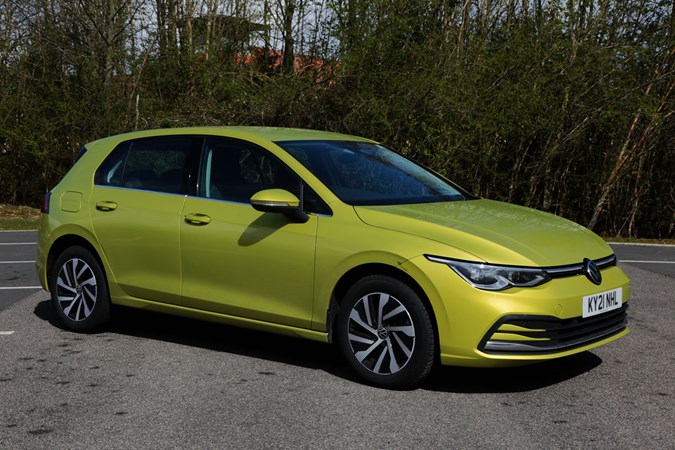
To drive it’s effortless. VW’s engineers have done a great job at ensuring a fuss-free handover from electric to petrol. The six-speed automatic ‘box is rarely caught out and the 7.4second 0-62mph time is more than enough to make mincemeat of the motorway slog.
The ID.3 has a 7.3second 0-62mph. It feels much brawnier off the line but past 30mph the Golf really catches up. It feels heavier than the Golf, but oddly has lighter steering.
I won’t bang on about degrees of steering feel or inertness but I will say the ID.3 is quieter and more relaxing but the Golf feels a bit firmer and more involving.
Worth noting that I could rarely get more than 200 miles out of the ID.3 but the PHEV Golf could go for nearly 500 miles with a full tank and battery if driven carefully.
Pricing
At time of writing; (20 April 2022) spec for spec there’s less than a grand in it. Or the Golf is around £25 per month cheaper.
Really makes you think. If you can charge from home at a lower rate while you’re asleep both make sense. But the waters become muddied if you’re charging from service stations or on the street where pricing is a lot higher.
For instance, to charge the ID.3 from 25-100% with Source London during the day, it’d usually cost me around £20. If I could charge from home off-peak it’d be more like £5.
Group test verdict
To me, the ID.3 has succeeded in succeeding the Golf. It’s incrementally better in most ways. A bit quieter, a bit more practical, a bit cheaper to run.
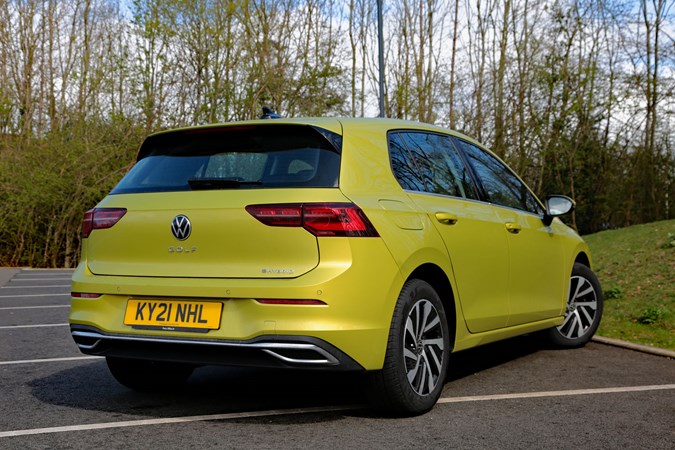
The only ‘if’ comes from the range. If you regularly cover more than 200 miles one-way in a day, or the infrastructure near you isn’t up to it, the Golf is the answer. For anyone else I’d suggest the ID.3.
Update 6: Would I recommend one?
After six months, 2,300 odd miles and lots and lots of mental maths mileage, my time with the ID.3 is up.
At the start of this long-term test I put forward the idea that the ID.3 would have to beat the Golf for me to be able to recommend it. And for me personally, I’d choose an ID.3 over a Golf. Therefore I would recommend one.
For me, as someone who has multiple street chargers within 500 metres of my flat and chargers at work, I very rarely had to make use of public infrastructure outside of my postcode. I imagine if I had access to a driveway and a charger, this would have been an even smoother process.
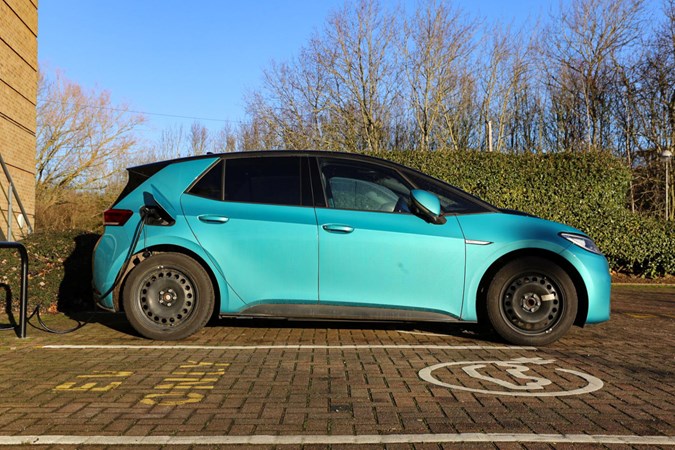
Of course, the ID.3 had its downsides. Broadly they’re all tech-based. The infotainment is a bit naff at times, especially the buttons that aren’t really buttons. And then there was the time it wouldn’t let me select the air conditioning menu. And the phone app and the car could never decide quite what the electric range was.
But over-the-air updates are forever bringing incremental improvements to the tech and the ID.3 did get less and less buggy.
The range for me is the single most important factor in an electric car. Before this test I’d have said the lowest real-world range I’d consider in an EV is 300 miles. After living with the ID.3, I’d now say it was 200.
Final thoughts
There are still a lot of questions to be answered about electric cars. How long the batteries last for, how much they’ll cost to change the battery once it does go, and of course the whole hydrogen debate. I think it’s very easy to get weighed down by this.
So I’ll offer this one piece of advice. If you can make an electric car work for you logistically, I think you should go for one. They’re relaxing (super quiet), easy to drive (they’re all automatic) and produce zero local emissions. Let the future unravel at its own rate and don’t worry about the Betamax debate.



